CSotD: Thanksgiving 75 Years Ago
Skip to comments
My goodness but 1948 was a fabulous year for cartoons! We were emerging from the war and feeling pretty good, but not yet arrogant, about ourselves. And newspapers still featured things like cartoons that their readers wanted. Fancy that!
As a result, this will be a longer than usual posting, and I hope you enjoy it!
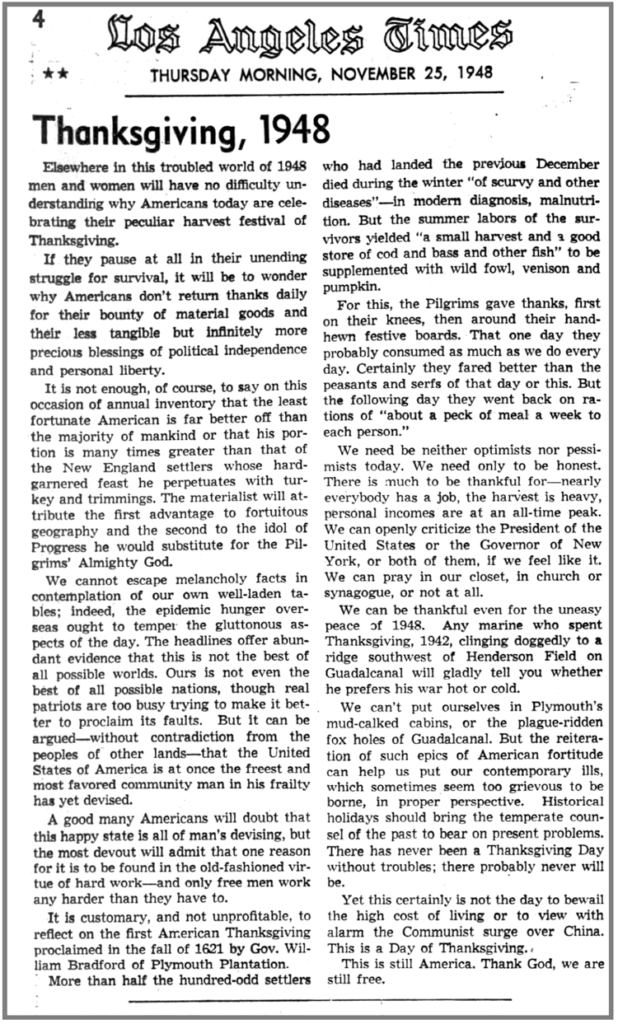
We’ll let the LA Times set the scene, and note that, when they speak of being able to criticize both the President and the Governor of New York, they are referencing that recent close race between Harry Truman and Thomas Dewey.
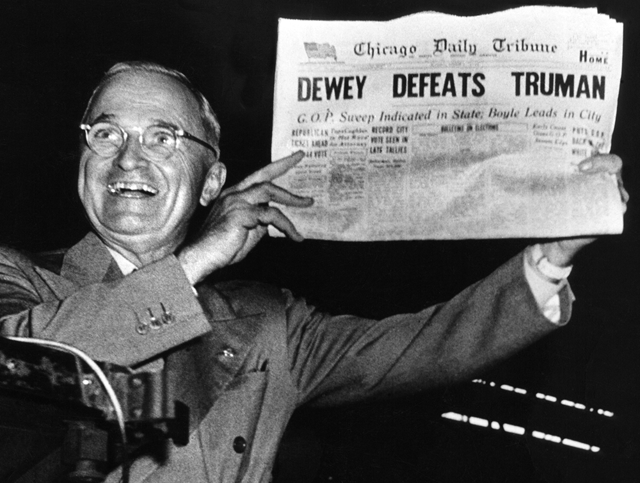
Yeah, that one.
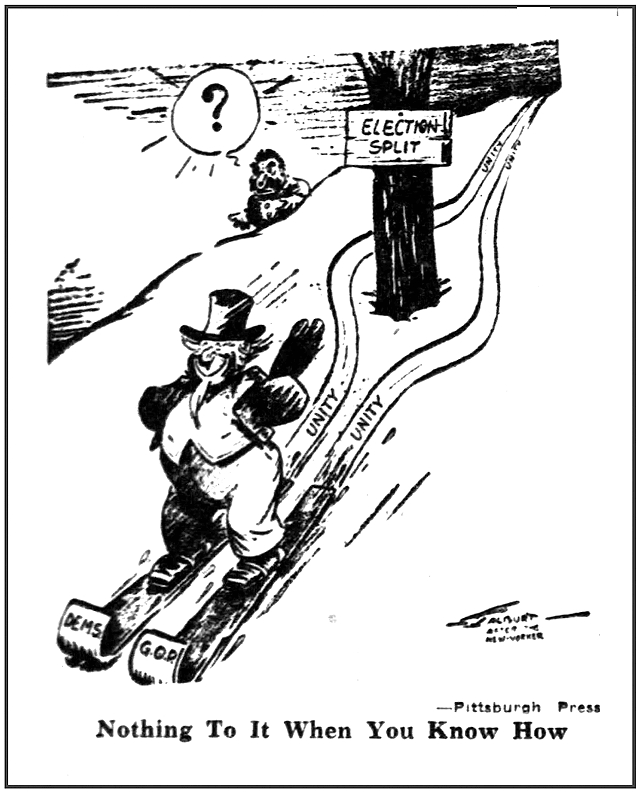
As H.M. Talburt put it, we’d come up with a way, against all expectations, to make bipartisan results happen. Charles Addams had done his classic skiing-on-both-sides cartoon in 1940, so it was an homage, with Joe Stalin as the mystified onlooker.
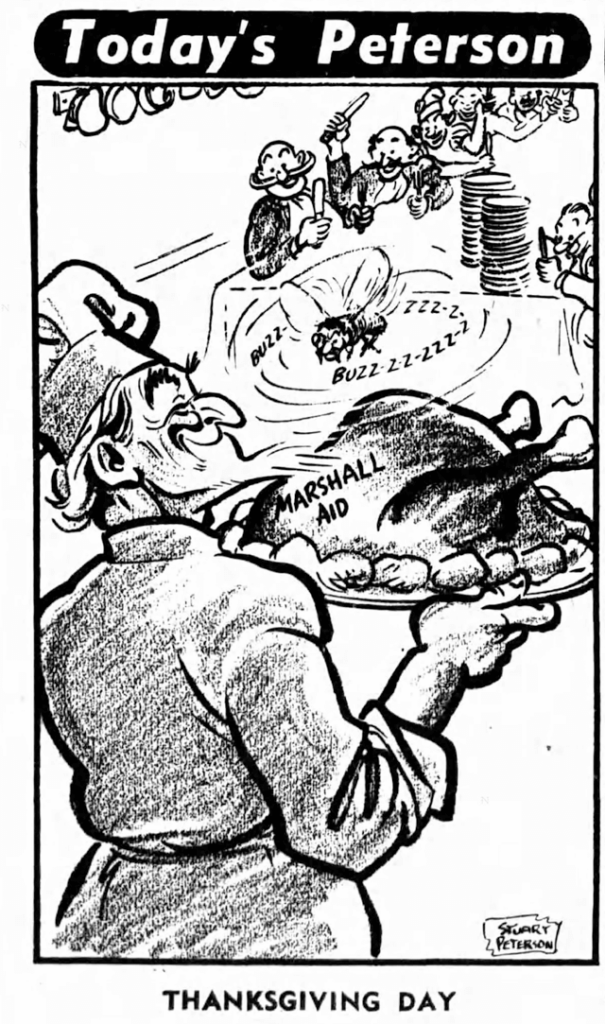
In Australia, Stuart Peterson saluted the Marshall Plan, signed into law in April to help rebuild our shattered allies and former foes in Europe, despite Joe Stalin’s flying around and attempting to downplay the growing influence of the US in world politics.
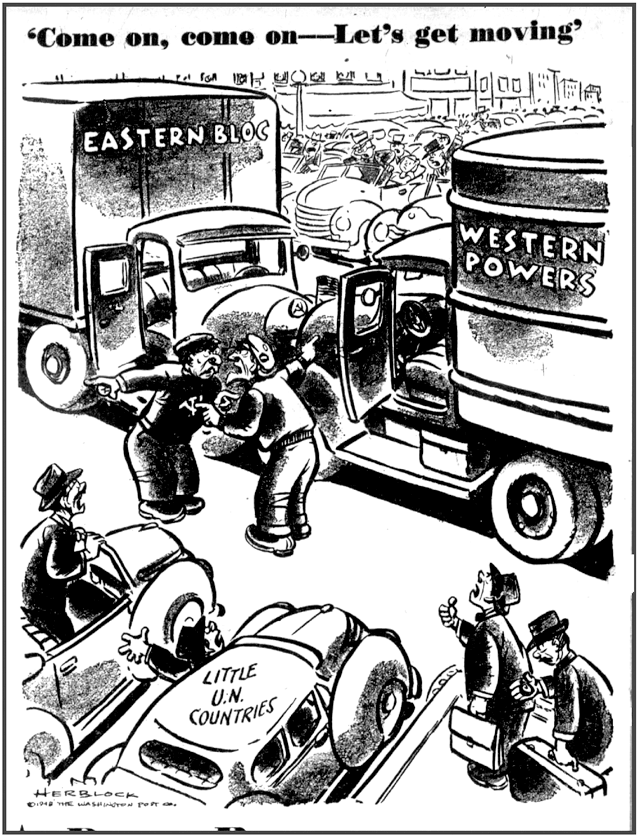
It was, as Herblock suggested, a fraught time, as East and West contended for influence and much of the world looked on with little influence but much interest.

Nor, as this illustration suggested, were Americans unaware of the world around them and the fortunate place in which they found themselves. Parents told their kids to clean their plates because “children in Europe are starving,” and they were. The end of the war had only brought one type of peace.
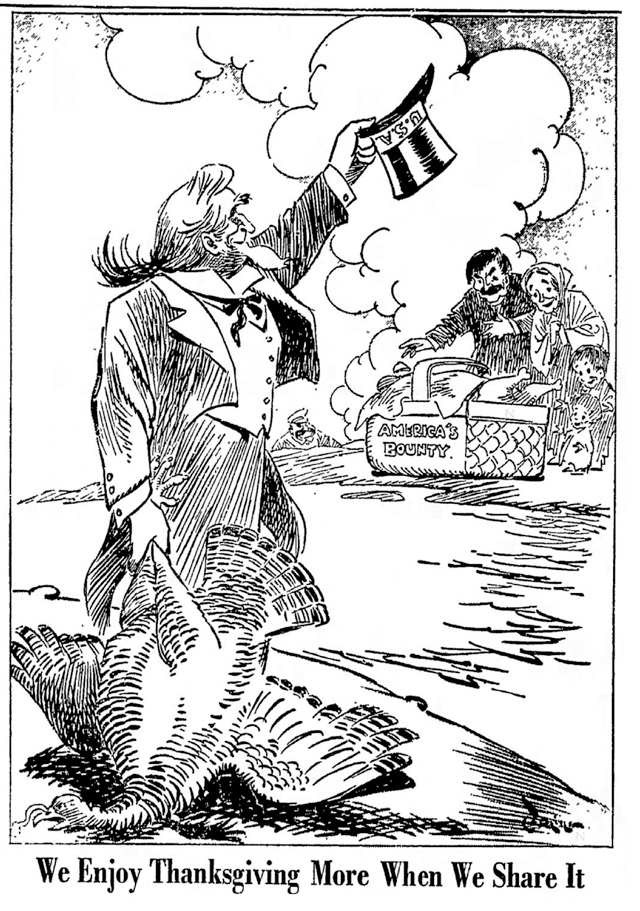
We were, Ding Darling pointed out, in a generous mood. However much the US could, now that it’s all over, be criticized for having held out from the war until the last minute, our generosity and rebuilding afterwards was acknowledged and appreciated and, on our side, made part of our identity.
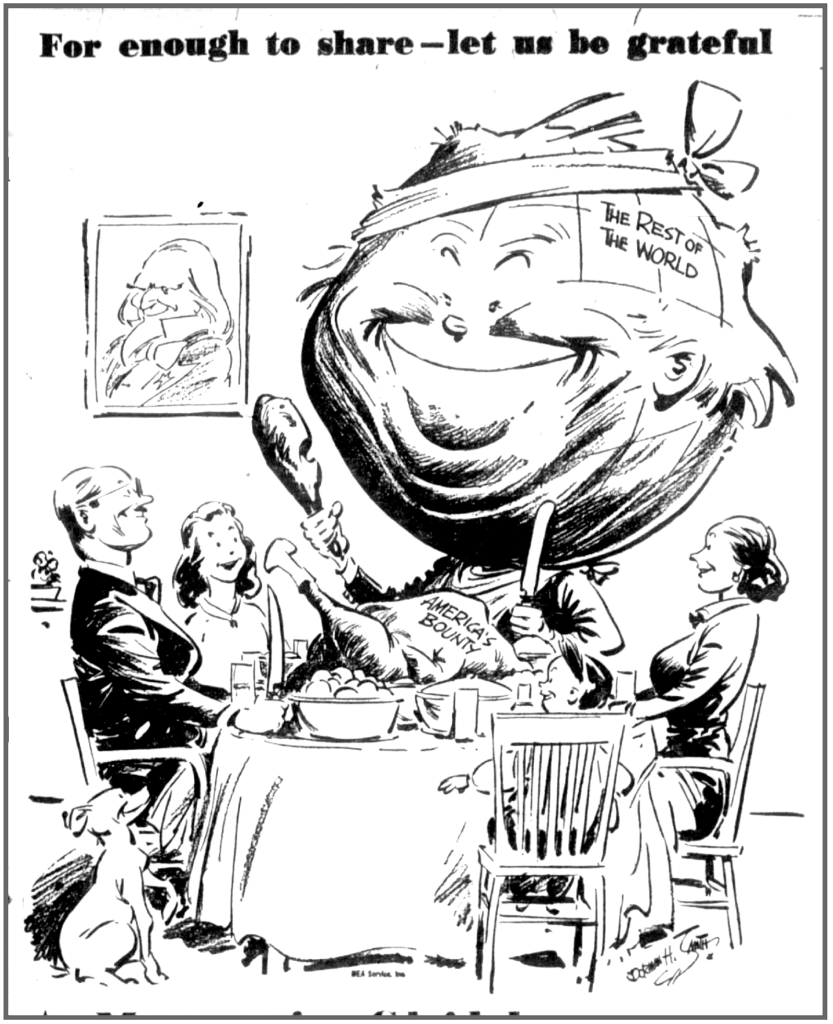
We felt pretty good about ourselves, as Dorman Smith suggested, and why not? It would be decades before selfishness and isolationism regained their foothold on the national conversation.
But only 25 shopping days before Christmas.
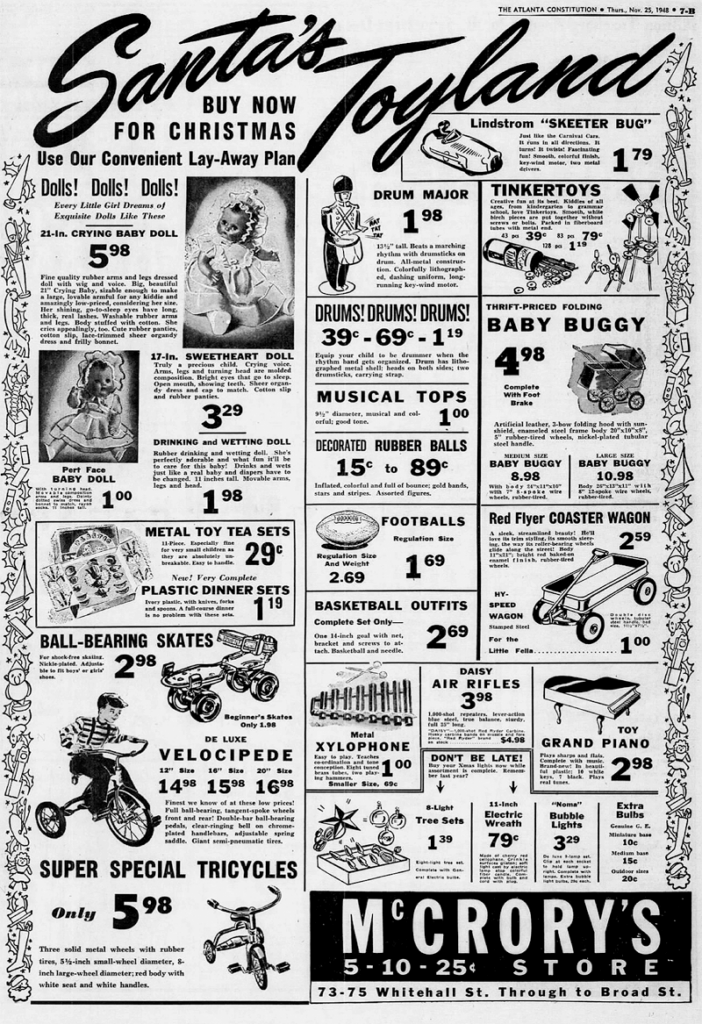
Or buy a gift the whole family can enjoy! Even women and children!
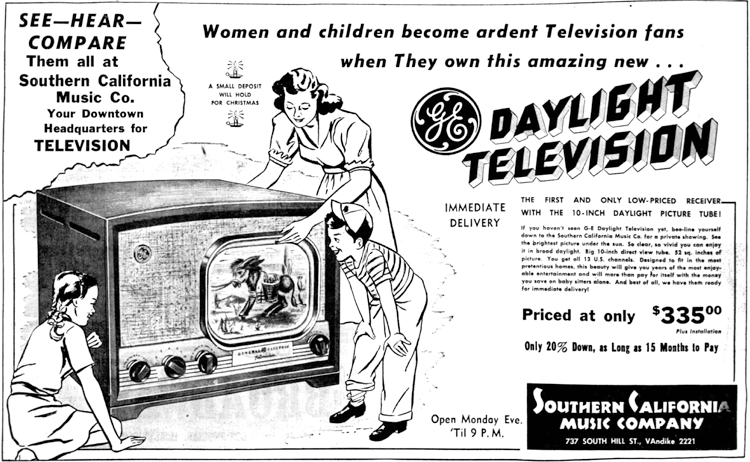
And it was a lovely time for cartoonists, as seen here:
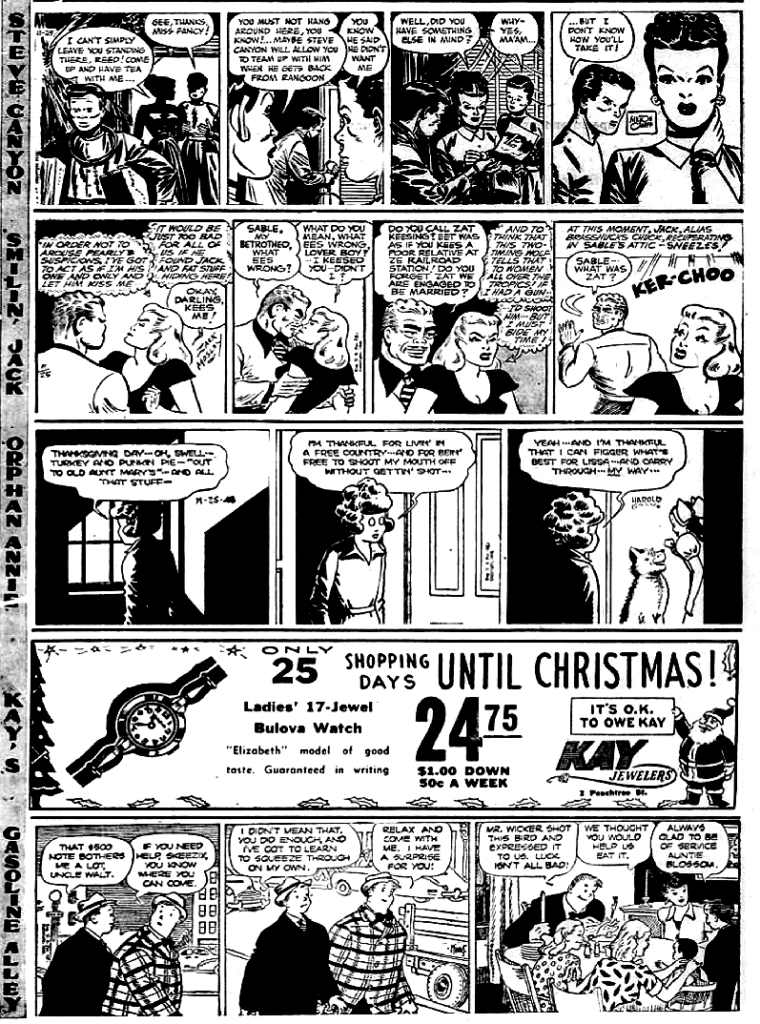
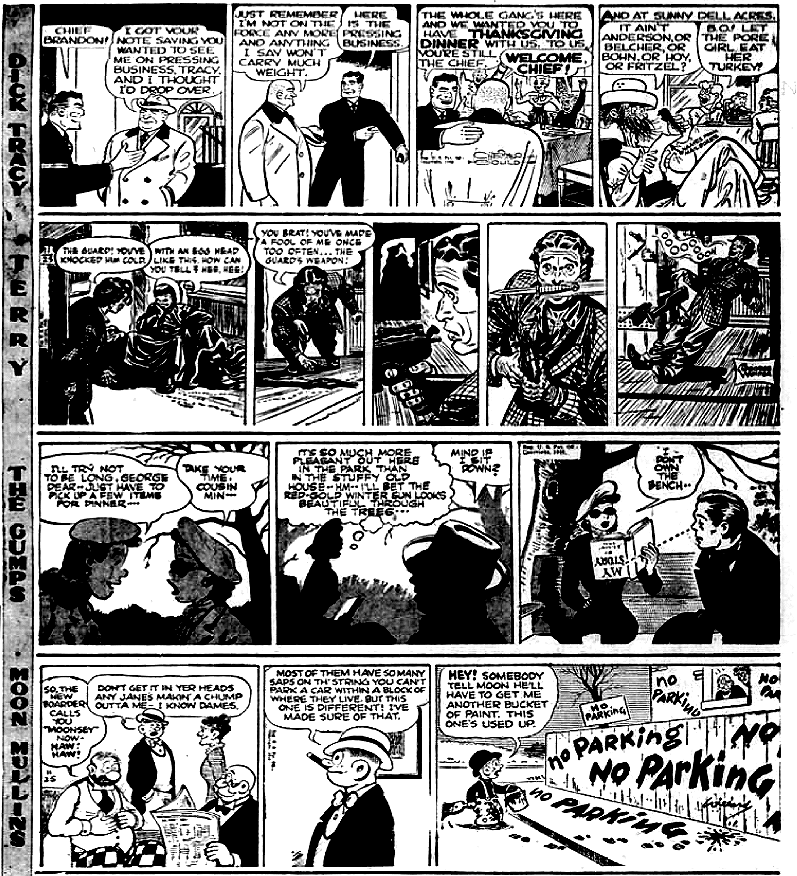
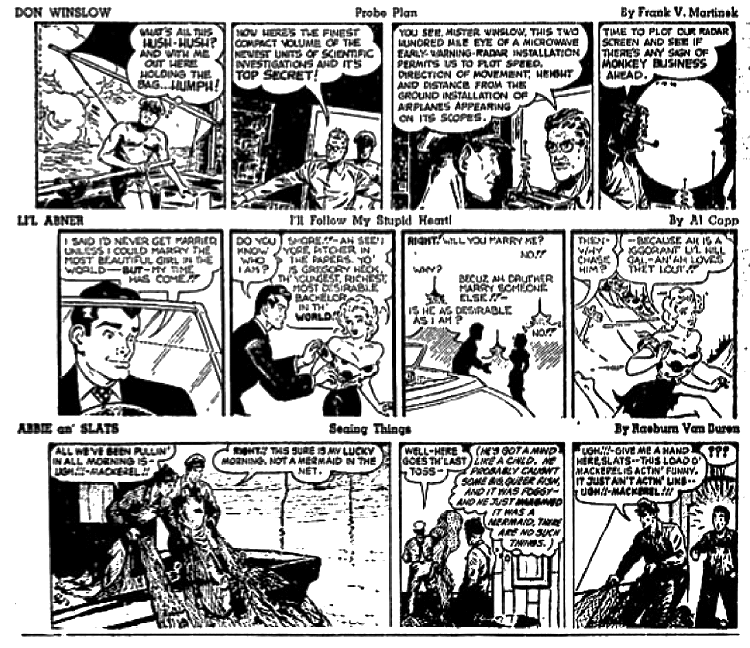



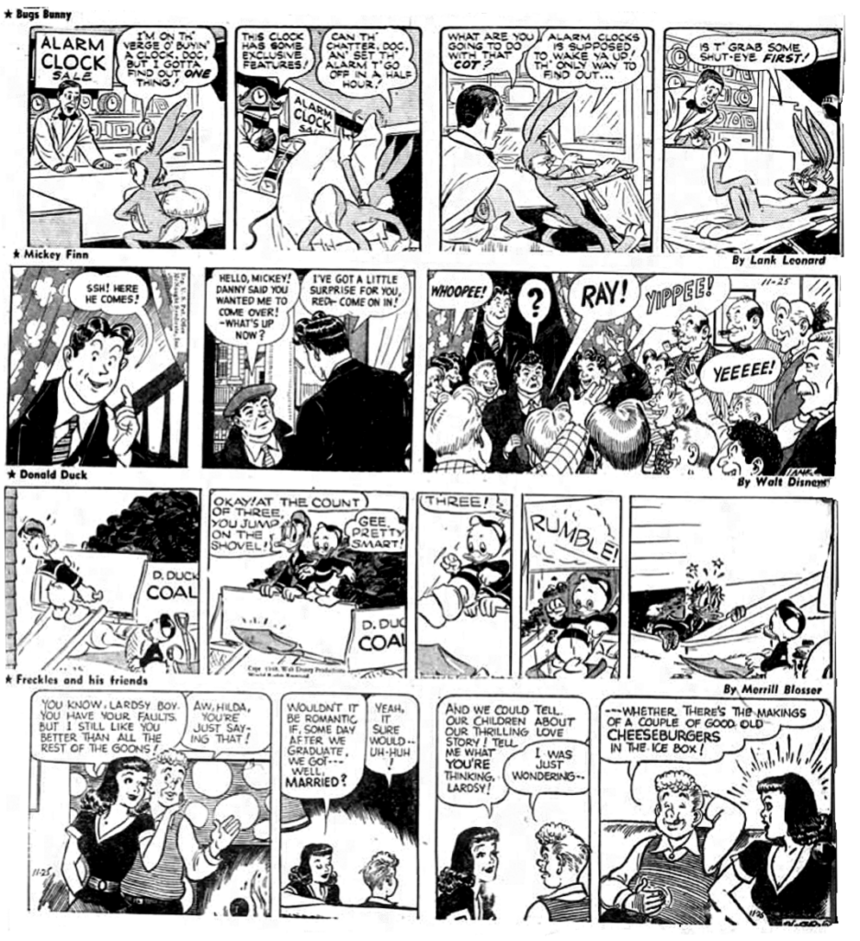





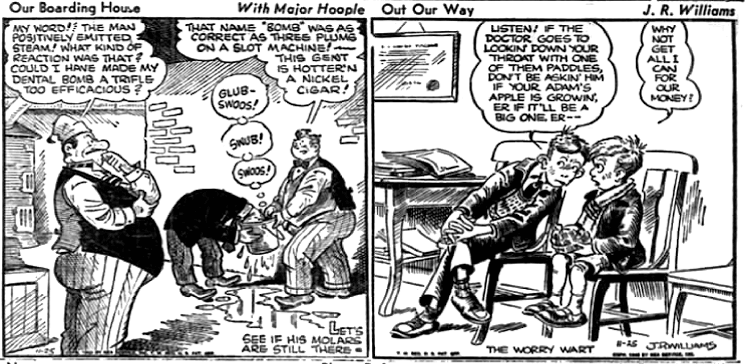
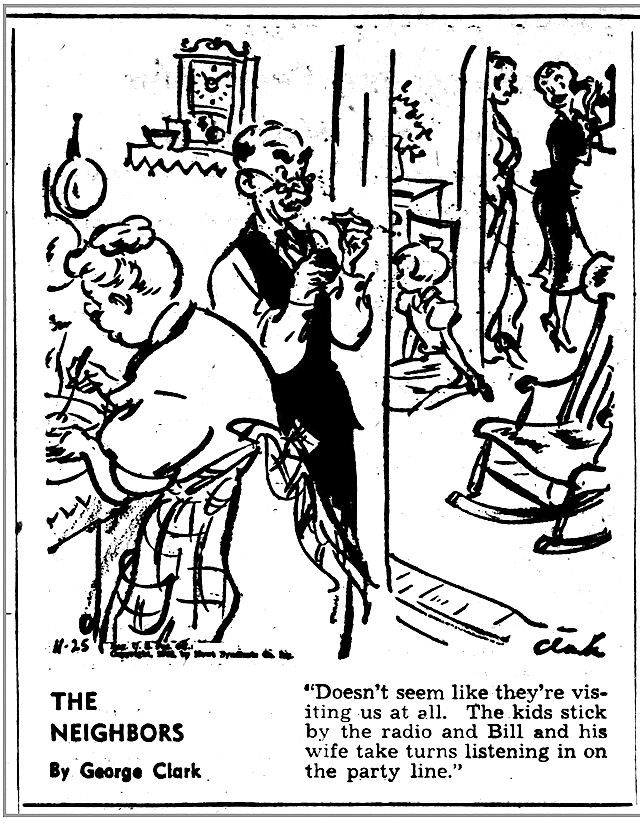
Apparently, complaining about kids on their cell phones is nothing new. Just the specific technologies.
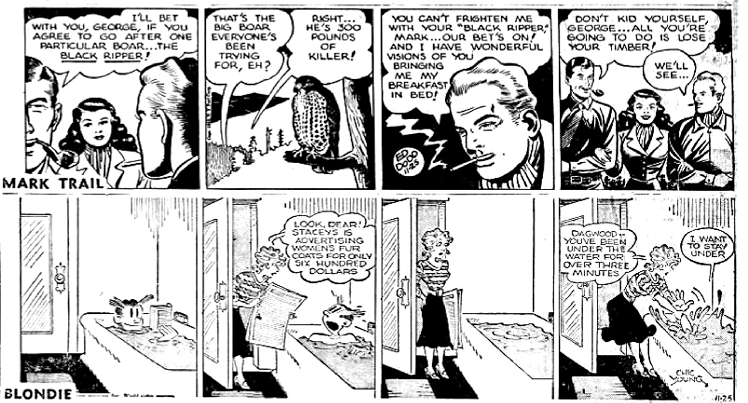
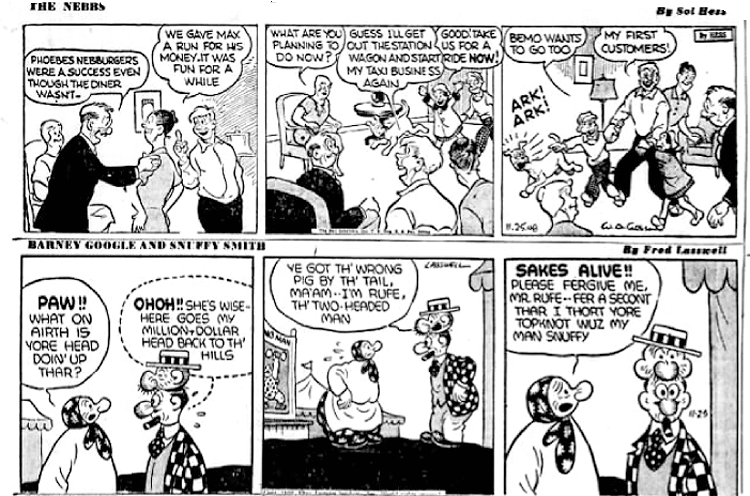
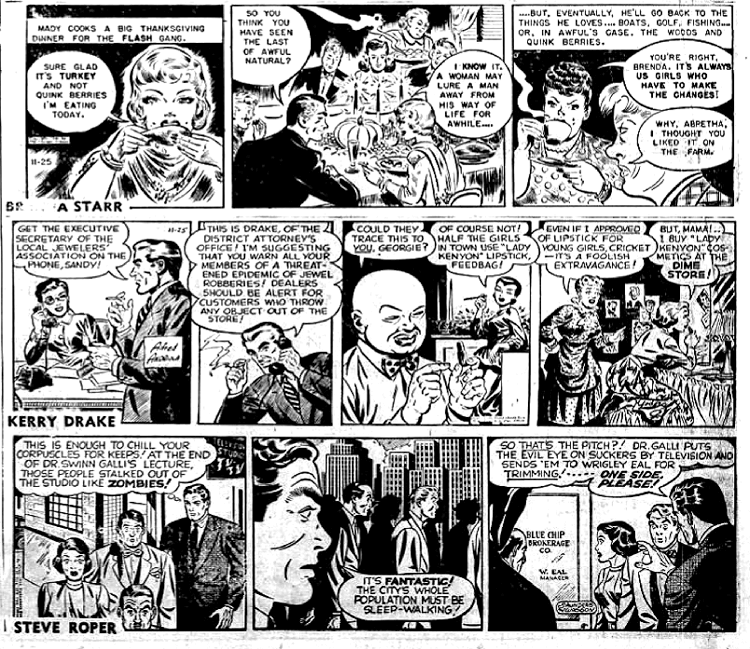
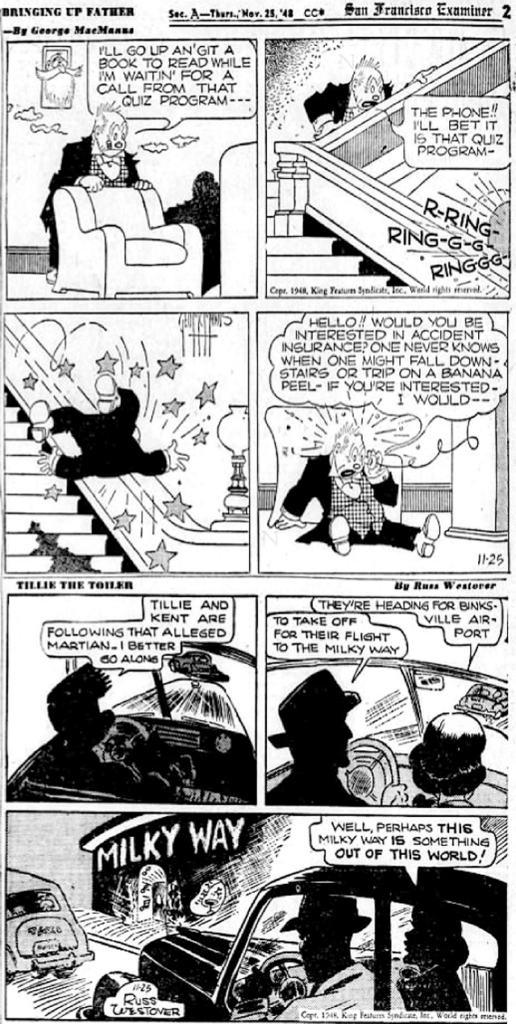
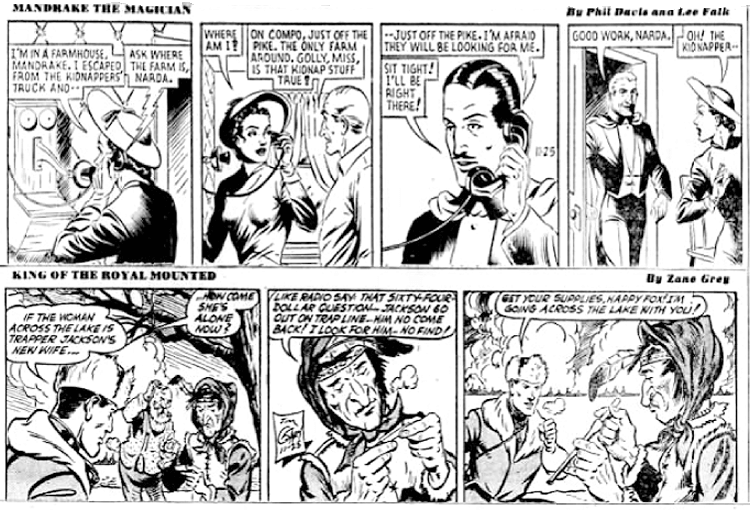

Penny, BTW, was modeled on slim Katherine Hepburn.
And here’s a reminder that having the magic team doesn’t necessarily result in commercial success:

They weren’t the only comic book creators having a rough time .
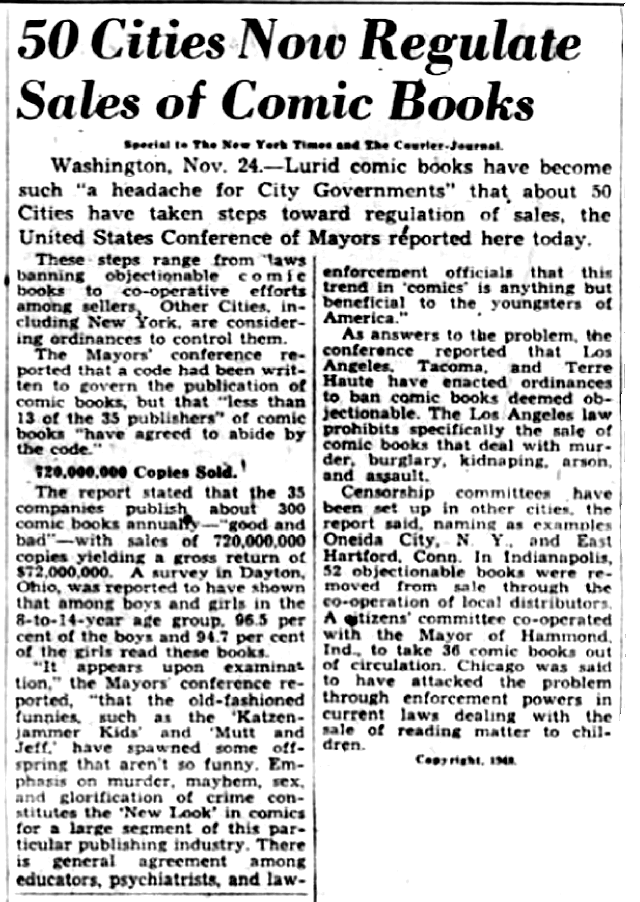
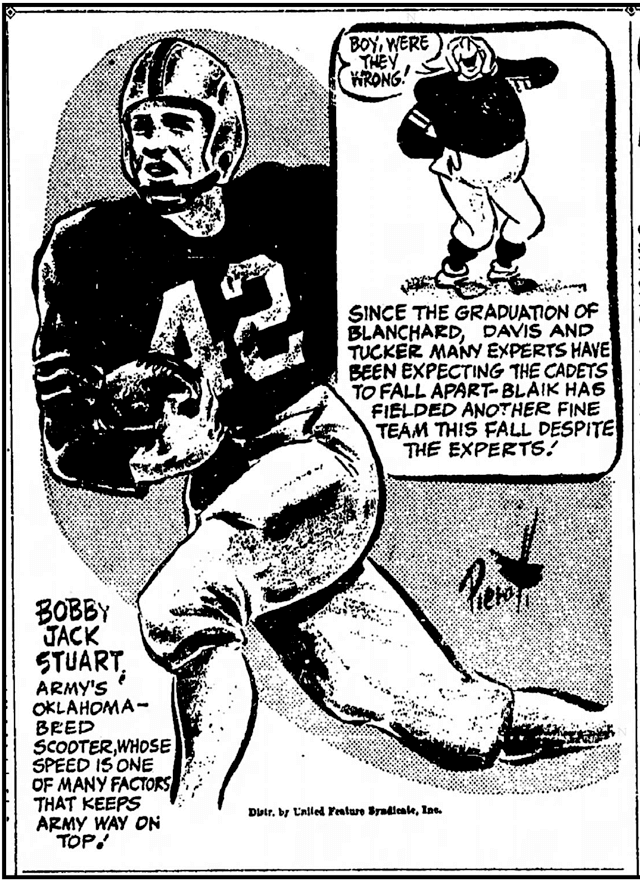
But it should also be noted that newspaper cartoons were not confined to the Funny Pages and were a major feature on the sports page. Because people like them and they matter.
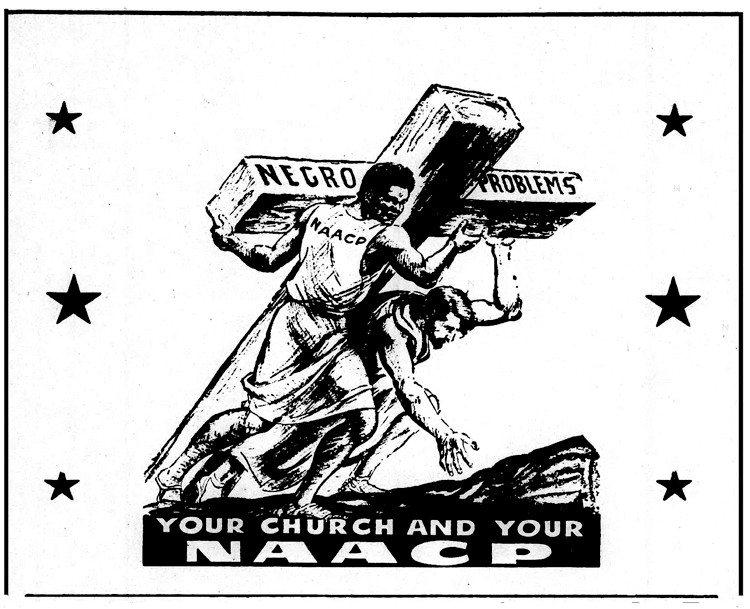
It should also be noted that, while the mainstream went its separate way, the black press had its own agenda after the war. One victory had been earned and another beckoned: Times were changing and there was a whole new world about to open up.
Stand by, America.
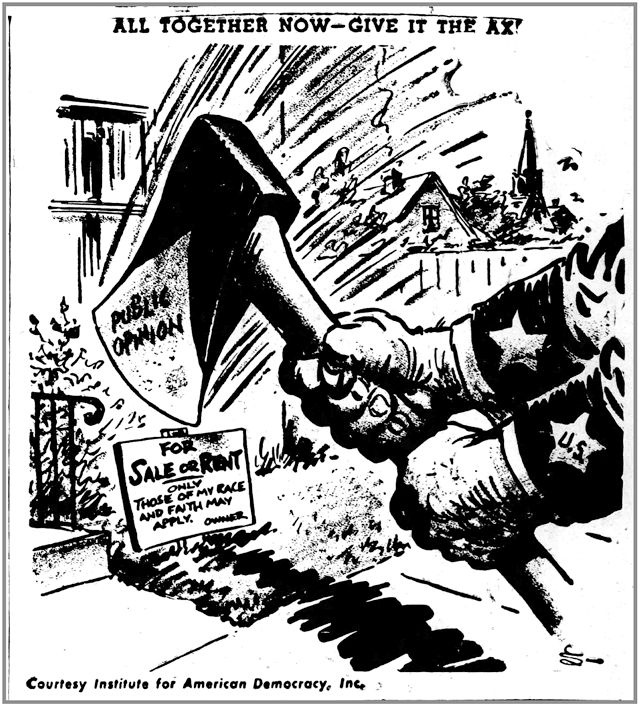
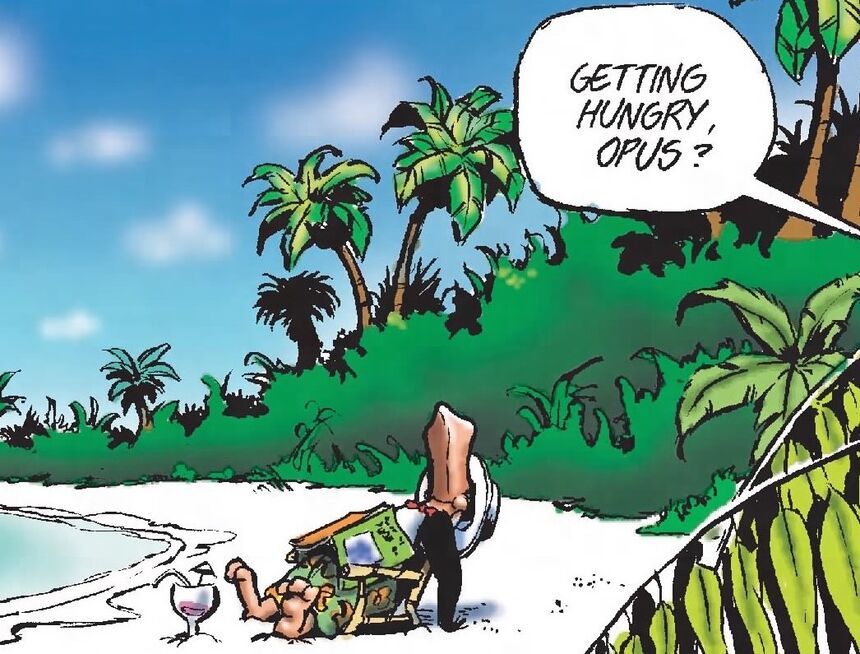
Comments 14
Comments are closed.